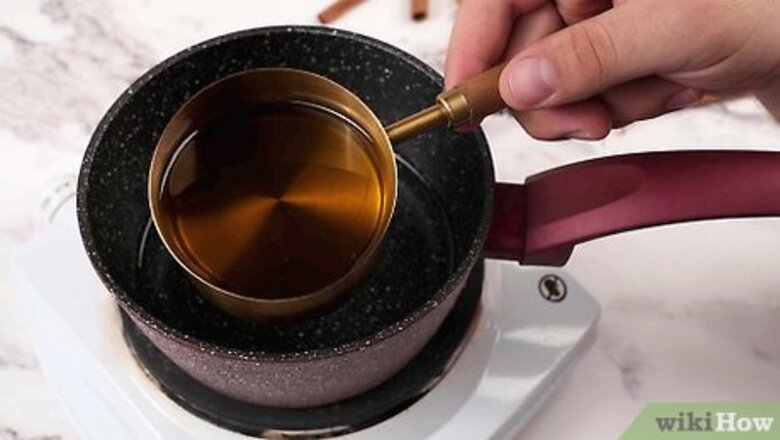
views
- Heat 1 c (200 g) of coconut oil and 1 c (240 ml) of olive oil in a saucepan over high for 1-2 minutes.
- Pour 1 c (240 ml) of water in a heat-safe glass bowl and mix in 2 tbsp (30 g) of lye. Then, stir the lye mixture into the saucepan with the oils.
- Heat the mixture to 125° F (52° C) then lower the heat to bring it to 100° F (38° C). Stir the mixture for 10-15 minutes, then add ½ c (150 g) of salt.
Mixing the Oils and Lye
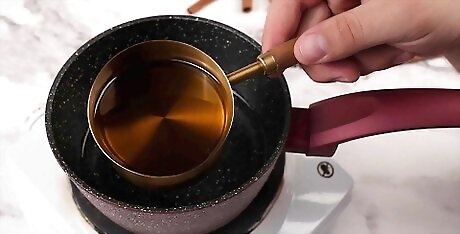
Combine the coconut and olive oils in a saucepan. Add 1 cup (200 g) of coconut oil and 1 cup (240 ml) of olive oil to a large saucepan. Stir the two together briefly, though they won’t blend completely until they are heated. You can substitute palm, vegetable, soybean, or jojoba oil for the coconut and olive oils.
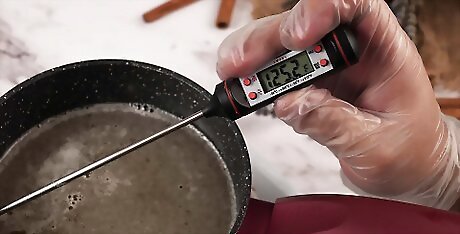
Heat the oils on high. Place the saucepan with the oils on your stovetop. Turn the heat to high, and allow the mixture to heat for 1 or 2 minutes or until the coconut oil begins to melt. Make sure to wear safety goggles or glasses, rubber gloves, and a face mask to protect yourself from the high temperature and the lye that you’ll use in the next step. Wearing long pants and a long-sleeve top are also a good idea.
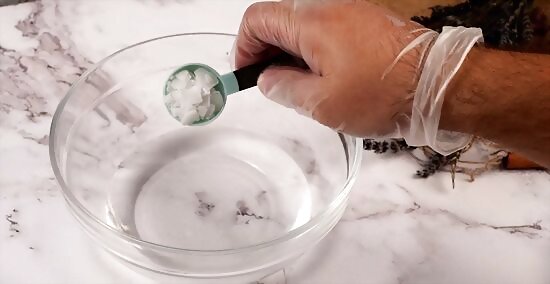
Mix the lye and water together. While the oils are heating, add 2 tablespoons (30 g) of lye into 1 cup (240 ml) of water in a heat-safe glass container. Be sure to add the lye into the water and not the other way around, because adding water to lye can cause the lye to expand out of the container. Online retailers are usually the best place to purchase lye. It can be difficult to find in brick and mortar stores. When you’re working with lye, adequate ventilation is important. Open some windows and/or turn on a fan.
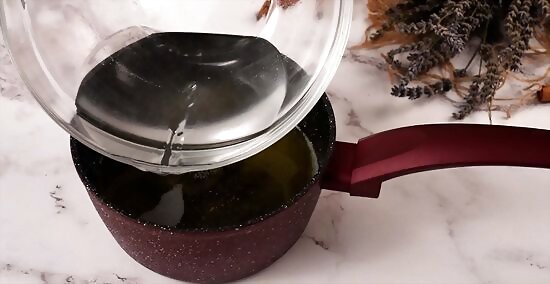
Stir the lye mixture into the oils. Once you’ve mixed the lye and water, carefully pour the mixture into the oils in the saucepan. Mix well to ensure that the ingredients are thoroughly combined. Be careful as you mix the lye and water in so the mixture doesn’t come into contact with your skin. If you get lye on your skin, flush your skin immediately with cold water and take off any clothing that it may have splashed on. Continue flushing the skin with water for 15 minutes, and then seek medical attention.
Thickening the Mixture
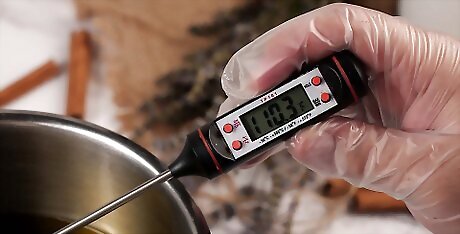
Heat the mixture to the right temperature. After you’ve added the lye solution to the oils, attach a clip-on candy thermometer to the side of the saucepan. Continue heating the mixture on high until the temperature reaches 125 degrees Fahrenheit (52 degrees Celsius), which should take approximately 20 minutes. Getting the mixture to the right temperature is very important when making vegetable glycerin so you must use a thermometer to make sure that the mixture is hot enough. Make sure to stir the mixture regularly so all of the ingredients are well blended.
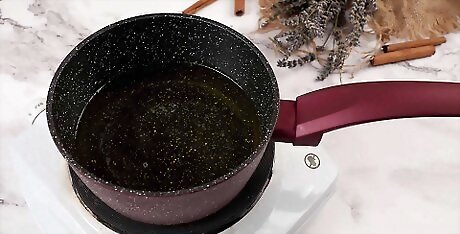
Lower the mixture’s temperature. Once the mixture reaches 125 degrees Fahrenheit (52 degrees Celsius), turn down the heat to medium or medium-low. You want to bring the mixture’s temperature down until it falls to 100 degrees Fahrenheit (38 degrees Celsius).
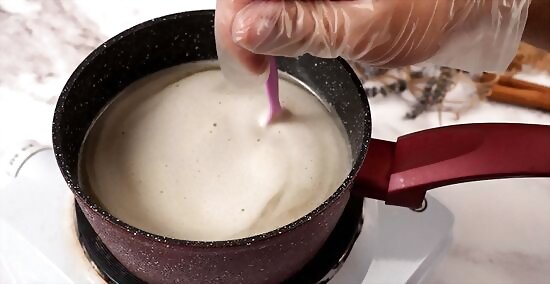
Stir the mixture until it thickens properly. After you’ve brought the mixture’s temperature down to 100 degrees Fahrenheit (38 degrees Celsius), continue stirring it for another 10 to 15 minutes over the heat. The mixture should thicken enough that the outline of the spoon’s path remains visible for a few seconds after you trace it through. Don’t cook the mixture too long, or it may become too thick to stir.
Finishing Off the Glycerin
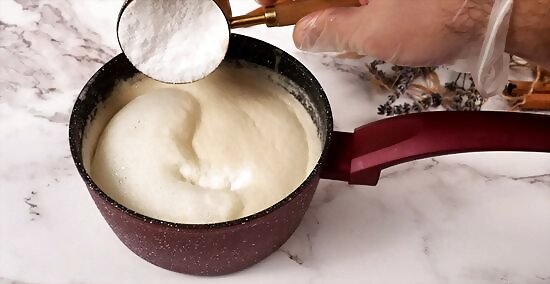
Remove the pan from the heat and add the salt. Once the mixture has reached the proper consistency, take the pan off the heat. Mix in ½ cup (150 g) of salt, and stir well so it is thoroughly incorporated. Make sure that the mixture is still hot when you add in the salt.
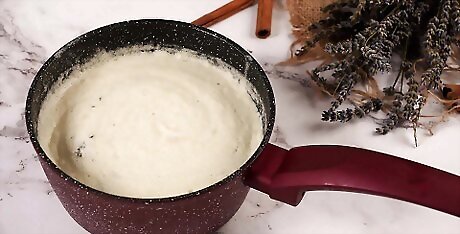
Allow the mixture to cool. After you’ve mixed the salt into the lye and oil mixture, leave it to cool completely, which should take 20 to 30 minutes. As it cools, the soap and glycerin will gradually separate into different layers. The soap will solidify into a thick layer on the top of the mixture, while the glycerine will remain liquid-y on the bottom.
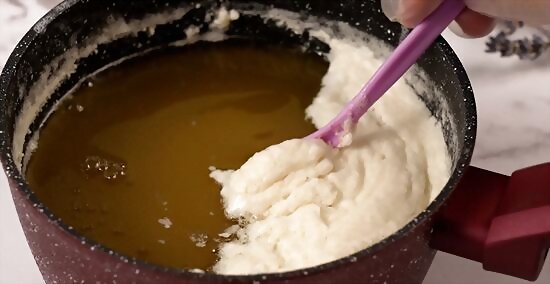
Skim the top layer from the mixture. When the mixture has cooled completely, pour off the top soap layer from the top of the glycerin. You may find it easier to use a spoon to gently lift the soap off, though. If you want to use the soap, add it to a soap mold and put it in the freezer for 24 hours. Let the soap bars air dry for at least 2 to 3 weeks to finish curing them. If you don’t want to make soap, you can discard the soap layer.
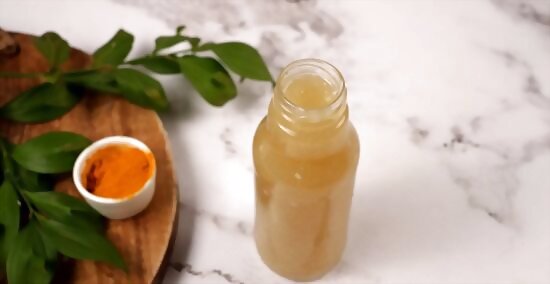
Pour the glycerin into a glass bottle. Once you’ve removed the soap from the top of the mixture, transfer the liquid vegetable glycerine to a glass bottle. Seal the container tightly, and store it in the refrigerator. The vegetable glycerin should keep in the fridge for at least 3 to 4 weeks. You'll know that it has gone bad if it is no longer clear and instead appears cloudy. Glycerin that has gone bad may also develop a foul smell.















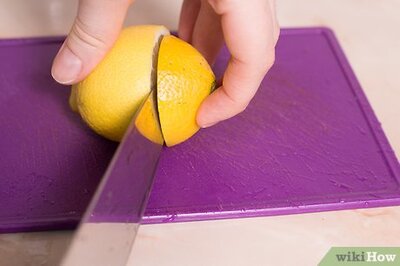
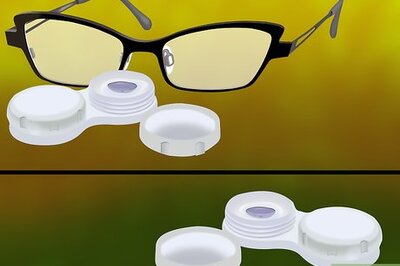


Comments
0 comment